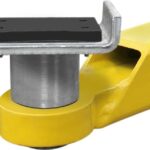Navigating the roads of California comes with the responsibility of ensuring the safety of all passengers, especially children. Understanding and adhering to California’s car seat law is not just a legal requirement; it’s a crucial step in protecting your child from serious injury in the event of a car accident. This guide provides a comprehensive overview of the California Car Seat Law, ensuring you have the knowledge to keep your little ones safe and compliant with the regulations.
Understanding California’s Child Passenger Safety Law
California law mandates that children under 8 years old must be properly secured in a car seat or booster seat in the back seat. However, the specifics of the law are based on both age and size, aiming to provide the best possible protection for children as they grow. It’s important to note that these laws are in place to minimize the risk of injury during a collision, and choosing the right car seat and using it correctly is paramount.
Key Requirements Based on Age and Size
The California car seat law is primarily structured around age and weight/height milestones. Here’s a breakdown of the requirements:
-
Rear-Facing Car Seat: Children under 2 years of age must ride in a rear-facing car seat unless they weigh 40 or more pounds OR are 40 or more inches tall. This “or” is crucial – if either weight or height is met, a child can transition, but staying rear-facing as long as possible is recommended by safety experts. Rear-facing car seats provide the best protection for infants and toddlers because they distribute crash forces across the strongest parts of the child’s body – the back and shoulders.
-
Forward-Facing Car Seat: Once a child outgrows the rear-facing car seat requirements (either age, weight, or height), they can transition to a forward-facing car seat with a harness. California law doesn’t specify an age limit for forward-facing car seats, but children should remain in them until they reach the maximum weight or height limit specified by the car seat manufacturer. This is typically around 65 pounds or more for newer seats.
-
Booster Seat: Once children outgrow their forward-facing car seat with a harness, they are not yet ready for just a seat belt. They must use a booster seat until they are at least 8 years old OR 4 feet 9 inches tall. Like the rear-facing rule, this is an “or” condition. Booster seats are designed to properly position the adult seat belt across the child’s body – low across the hips and snugly across the shoulder and chest. Without a booster, the seat belt can ride up on the stomach and neck, causing serious injury in a crash.
-
Seat Belt Alone: Once a child is 8 years old or 4 feet 9 inches tall (whichever comes first), they can legally use a seat belt alone. However, even at this stage, it’s crucial to ensure the seat belt fits properly. The lap belt should lie low and snug across the hips, not the stomach, and the shoulder belt should cross the middle of the chest and shoulder, not the neck or face. If the seat belt doesn’t fit correctly, a booster seat should still be used.
Importance of Proper Car Seat Installation and Usage
Beyond just having the right type of car seat, proper installation and consistent usage are equally vital. A correctly installed car seat significantly reduces the risk of injury. Here are some key points:
- Read the Manuals: Always read both the car seat manufacturer’s instructions and your vehicle owner’s manual for specific guidance on installation.
- Tight Installation: The car seat should be tightly installed, moving less than one inch side-to-side or front-to-back at the belt path.
- Harness Straps: Harness straps should be at or below the shoulders for rear-facing and at or above the shoulders for forward-facing. They should be snug enough that you cannot pinch any slack at the collarbone.
- Chest Clip: The chest clip should be positioned at armpit level once the harness is tightened.
- Registered Technician: Consider getting your car seat installation checked by a certified Child Passenger Safety Technician (CPST). They can ensure your seat is installed correctly and answer any questions you may have. You can find a local CPST through Safe Kids Worldwide or your local fire department.
Penalties for Violations
Failing to comply with California’s car seat law can result in fines. While the primary goal is child safety, enforcement is in place to encourage compliance. Fines can vary, and repeat offenses may lead to higher penalties. More importantly than the financial repercussions, non-compliance puts your child at significant risk of injury.
Resources for More Information
For the most up-to-date and detailed information, refer to these official resources:
- California Department of Motor Vehicles (DMV): The DMV website provides detailed information on car seat laws and safety tips.
- Safe Kids California: This organization offers resources, events, and car seat checkup events throughout California.
- National Highway Traffic Safety Administration (NHTSA): NHTSA provides extensive information on car seat safety, ratings, and recall information.
Conclusion: Prioritizing Child Passenger Safety
California car seat law is designed to protect children on the road. By understanding and following these regulations, parents and caregivers play a vital role in minimizing the risk of injury in car accidents. Choosing the right car seat based on your child’s age and size, ensuring proper installation, and consistently using the car seat correctly are essential steps in prioritizing your child’s safety. Always remember, car seat safety is not just about following the law; it’s about giving your child the best chance of staying safe on every journey.
